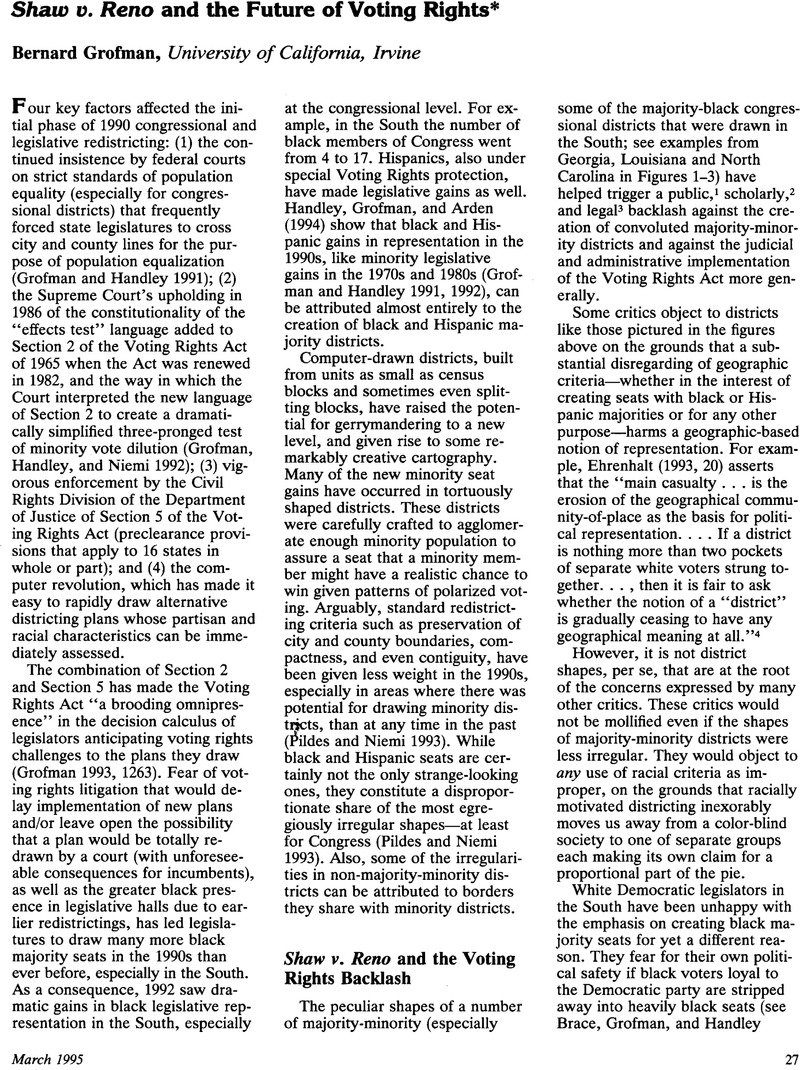Grofman, Bernard, and
Handley, Lisa.
1992b. “
Minority Population Proportion and Black and Hispanic Congressional Success in the 1970's and 1980's.”
American Politics Quarterly
17:
436–45; reprinted in revised and updated form under the title “Preconditions for Black and Hispanic Congressional Success,” in The Election of Women and Minorities, eds.
Rule, Wilma and
Zimmerman, Joseph.
New York:
Greenwood Press.
CrossRefGoogle Scholar 